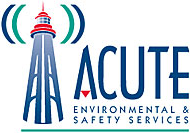Lockout Tag Out (LOTO) training is a way to manage the hazards of working with machinery or systems that utilize hazardous energy to prevent staff from being exposed to risks of harm and injury. Employers must meet a number of health and safety training requirements mandated by Ontario’s Occupational Health and Safety Act (OHSA) and Canadian Centre for Occupational Health and Safety(CCOHS). Click here to see upcoming LOTO training. Get your team the hands-on training that will help protect your workplace from hazardous energy and government penalties. Hands-on training is the best way to ensure your team knows how to secure different systems and avoid being harmed by hazardous energies.
This video serves as a helpful primer on understanding what is LOTO and how it can help you improve workplace safety.
Pertinent Regulation Summary
There are a number of government requirements for employers when staffing team members working with hazardous energy. Some requirements are available online while others require organizations to purchase a copy of the Canadian standard CSA Z460-05 (R2010) “Control of Hazardous Energy“. The usual disclaimer carries here, as this abridged version does not replace a full review of relevant legislation and standards from the MLITSD and the Canadian Centre for Occupational Health and Safety (CCOHS).
Responsibilities of Employers
- Communication and training ( CSA Z460-05 clause 7.5)
- Minimum frequency training requirements ( CSA Z460-05 clause 7.5)
- Training must be provided to workers, supervisors, or any employees working in confined spaces (O. Reg. 632/05: CONFINED SPACES 8.01) including but not limited to recognition and dealing with of hazards
- Specific training must be tailored to workplaces that are deemed project sites (O. Reg. 632/05: CONFINED SPACES 9))
- For farming operations, employers are to provide training on proper lockout procedures on each type of equipment used (MLITSD Resource)
- Employers must maintain records of who participated in and who conducted training (O. Reg. 632/05: CONFINED SPACES 8.01(1) , 9.01(2), 9.1(4))
- Training provided must also be developed in consultation with a health and safety representative or a member of the joint health and safety committee (O. Reg. 632/05: CONFINED SPACES 8.01(1) , 9.01(2), 9.1(4))
 Here is what a recent customer had to say about their experience engaging ACUTE as their training provider:
Here is what a recent customer had to say about their experience engaging ACUTE as their training provider:
“Very professional approach to consulting. I am not surprised about the success ACUTE has achieved over the last 15 years that I have worked with them. ACUTE delivers with great customer service (creative solutions, flexible accommodation, professional conduct). ACUTE is recognized and respected as a people organization and they have been doing it right for a long time.“
–Konstantinos
See here for more reviews.
 Who should take Lockout Tag Out Training
Who should take Lockout Tag Out Training
Employers, supervisors, and workers who may be involved with planning or performing work that may expose a worker to hazardous energy will find this course beneficial. Maintenance workers, industrial equipment operators, millwrights, electricians, and HVAC technicians are just a few of the occupations that will find the practical application of this course helpful.
Why Lockout Tag Out Training is Important
CCOHS explains that LOTO is significant because while devices such as barrier guards or guarding devices are installed on systems to maintain worker safety while these systems are being operated, when non-routine activities such as maintenance, repair, set-up, or the removal of jams, clogs, or misaligned feeds are performed, these safety devices may be removed provided there are alternative methods in place to protect workers from the increased risk of injury of exposure to the unintended or inadvertent release of energy.
The main method used and recommended to protect workers from risk of harm in these cases is the use of a lockout/tag out program.
Outcomes of a LOTO Program
A LOTO program seeks to fulfill these outcomes in helping protect workers from hazards and overall improve workplace safety. The LOTO program provides written instructions, training, lockout tag out equipment, and periodic inspections in helping employees make use of best practices and standards defined by the CCOHS. A LOTO program enables workers to be prepared and protected in such situations as:
- “Contact with a hazard while performing tasks that require the removal, by-passing, or deactivation of safeguarding devices.”
- “The unintended release of hazardous energy (stored energy).”
- “The unintended start-up or motion of machinery, equipment, or processes.”
To see a helpful fact sheet provided by CCOHS on LOTO, click here.
 Why is Locking and Tagging Out a System Required and What are the Steps
Why is Locking and Tagging Out a System Required and What are the Steps
By following these procedures organization can help safeguard their technology investments and also their workplace staff. A LOTO procedure is initiated for a number of reasons including maintenance to a machine to continue smooth and safe operation, system repairs due to the entrance of foreign objects or living organisms, and training/instructional purposes to name a few.
- Prepare for termination of system operation
- Authorized person will notify all affected persons
- Equipment shutdown
- Isolation of system from hazardous energy
- Controlled release of stored or residual energy
- Lockout/tag out the system
- Make sure the energy isolation is working
- Perform cleanup and maintenance activity that triggered the lockout/ tag out procedure
- Disable the lockout/tag out devices
The steps provided above are a summary of CCOHS’ resource on how to lock out and tag out a system that operates on hazardous energy. Follow the link to see examples and best practices.
 Why Training Makes All the Difference
Why Training Makes All the Difference
Training helps translate policy into best practices and learned habits that not only pay dividends for the individual but for the organization as a whole. Training reduces the cost of maintenance in the long run by ensuring staff doing maintenance are prevented from injuries and costly downtime for your organization. With the variety of energy sources and types of equipment, hands-on training is a requirement to help employees become competent in working with the different hazards they face.
 ACUTE’s LOTO Training
ACUTE’s LOTO Training
There are many types of potentially hazardous energy including, electrical, thermal, chemical, pneumatic, hydraulic, mechanical, and gravitational energy. All hazardous forms of energy must be locked out, blocked or released to ensure that machinery or equipment does not turn on or move during installation, repair or maintenance. This training program will teach students the methods and the legislative requirements for hazardous energy control (Lockout) in the workplace.
Participants Learn Technical and Applied Skills Through
- Classroom interaction with experienced instructors
- Exploring legislative requirements
- Demonstration and hands-on training in the care and use of equipment
- Detailed handouts, videos, and quizzes
Duration: 1/2 day (4 hours)
Click here to sign-up and to learn more about the LOTO training program.
Going Beyond Compliance with ACUTE’s Ontario LOTO Training
Meeting regulatory requirements offers significant accountability for employers. The true objective, however, is to ensure workers are effectively protected and equipped to navigate workplace energy hazards. ACUTE not only meets government requirements but strives to provide quality, hands-on, and industry-tailored training to each of their clients. ACUTE has a cutting-edge training facility that has hosted the Ontario Ministry of Defense and Labour. Here are ways that ACUTE goes beyond government compliance in Ontario health and safety training.
- Open Door Instructor-Student Partnersh
 ip: ACUTE’s training services emphasize client participation. Staff foster relationships with clients and serve as a touchstone for advice moving forward.
ip: ACUTE’s training services emphasize client participation. Staff foster relationships with clients and serve as a touchstone for advice moving forward. - Serving Your Team and Industry: With a vast array of clients in the manufacturing, construction, health, academic, and government sectors, ACUTE brings the best safety practices from across the spectrum to your workplace.
- 100 Years Combined Experience: ACUTE provides comprehensive health and safety training, on-site safety services, and consulting services. With over 100 years of combined experience, our staff offers more than theoretical or abstract ideas. ACUTE offers solutions.
- Track Record of Success: ACUTE is rated 4.9/5 stars on Google reviews, demonstrating a commitment to our clients, quality, and a passion for training. ACUTE also tracks the training records of your staff free of charge when you take one of our courses!
Contact us today for quality training in your workplace or on-site at ACUTE’s proven training facilities!
ACUTE is located in Waterloo, Ontario, and services customers from cities such as Toronto, Mississauga, Brampton, Hamilton, Milton, Kitchener, London, Guelph, and many other cities from across Ontario.
Definitions
The following terminology definitions are from the Canadian Standards Association and CCOHS respectively.
Hazardous Energy – is any electrical, mechanical, pneumatic, chemical, nuclear, thermal, gravitational, or other energy that can harm people.
Lockout/Tagout – is a means of controlling hazardous energy and preventing harm to employees. Lockout is the placement of a lock or tag on an energy-isolating mechanism in alignment with a developed process, indicating that the energy-isolating mechanism is not to be operated until removal of the lock or tag in accordance with an established procedure.
Affected person – is an employee whose job requires them to operate a system or work in an area in which servicing or maintenance is being performed under lockout/tag out.
Authorized person – is an individual who is qualified to control hazardous energy sources because of their knowledge, training, and experience, and has been assigned to engage in such control.
System – refers to machinery, equipment, or processes.

